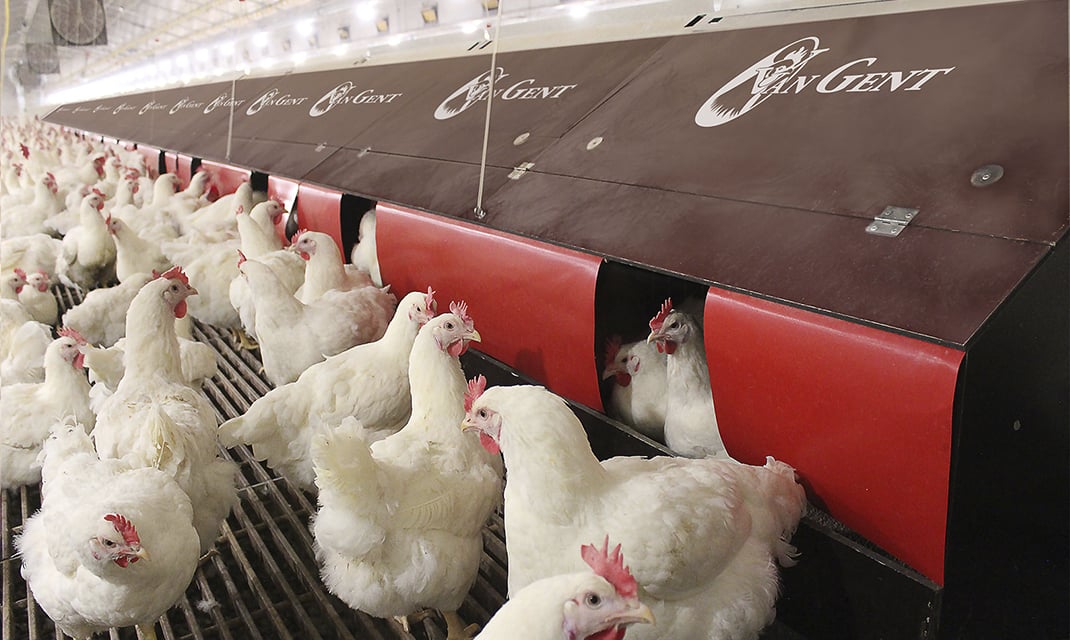Nick Paridaans and Nane Waravo are responsible at The Schippers Group for the promotion of the HyCare Experience Centre for poultry. They want to give poultry farmers a complete picture about hygiene and resistance to antibiotics (AMR), which includes a nest. Because that is where the egg starts: "That is why we have asked Vencomatic Group to put an example of their famous Van Gent nest here."
Why resistance to antibiotics?
"It is the mission of The Schippers Group to combat antimicrobial resistance (AMR), or in other words to prevent bacteria from becoming insensitive to antibiotics, and therefore untreatable. AMR is the greatest future threat to human health and will kill more people than cancer. 80% of antibiotics worldwide are used in animal husbandry, if we can reduce their use there, it will have a direct effect on people."
"HyCare is a combination of hygiene and care: 'Hygiene' and 'Care'. On the one hand we try to keep the risk for infection as low as possible and on the other hand we try to support the animals as much as possible, especially during critical periods of their lives. It is the combination of both that produces the best results."
How do you do this in practice?
"We have a so-called HyCare Experience Center for each of the pig, cattle and poultry sectors. There we explain what HyCare is, taking the visitor along with us in the programmes we offer and the story behind hygiene."
.jpg?width=5464&name=amr%20(2).jpg)
"In our poultry center we have four houses with chickens, two are identical with the only difference being that in one house we work according to the HyCare method and in the other house in the conventional way. This way you can compare what works and what the differences are. In the other two houses, our R&D department have smaller compartments in which they can test innovations. If positive results are discovered, we test it in the big barn."
"In the Experience Center we show a number of so-called pillars: 1) the germ-free living environment (preventing infections), 2) pore-free surfaces (coating for concrete etc.) 3) pest control 4) optimal drinking water and 5) optimal care: how to correctly manage all critical periods in the life of animals, for example intestinal health."
Under which pillar does the Van Gent nest fall?
"Because the egg is laid in the laying nest and not in the litter, it facilitates a hygienic start for the day-old chick. In our system, the Van Gent nest falls under the pillar 'germ-free environment'. We explore the possibilities of the laying nest, and how we can keep the eggs as clean as possible."
"In this Experience Center, we focus not only on broilers, but also on the broiler breeders that use the Van Gent nest. Hygiene is also important in the hatchery of course, ensuring all eggs are properly disinfected upon entry. And that there is no cross-contamination or recontamination within the hatchery.”
"It's about the whole chain: if the animals are healthier and the eggs are cleaner and of better quality. This directly results in better chick quality and better results for every poultry farmer. This is what we are all about."
Contact me Or click here to find a dealer near you
The Van Gent Nest
The Van Gent Nest is well known for its performance: less floor eggs, high quality number of hatching eggs and simplicity. This poultry system is a successful wooden nest from years of practical experience. The construction is solid and simple, which makes the nest easy to assemble and easy to clean. The nest is provided with an automated expulsion system. It expels birds from the nest after laying during the night, preventing broodiness, and soiling the nest. The hardwood slatted floors of Van Gent are designed specifically for the welfare of the birds, this results in an excellent result for the poultry farmer.












.png?width=160&height=132&name=Egg%20packers%20-%20Vencomatic%20Group%20(2).png)
.png?width=160&height=132&name=Meggsius%20Select%20-%20Vencomatic%20Group%20(2).png)










